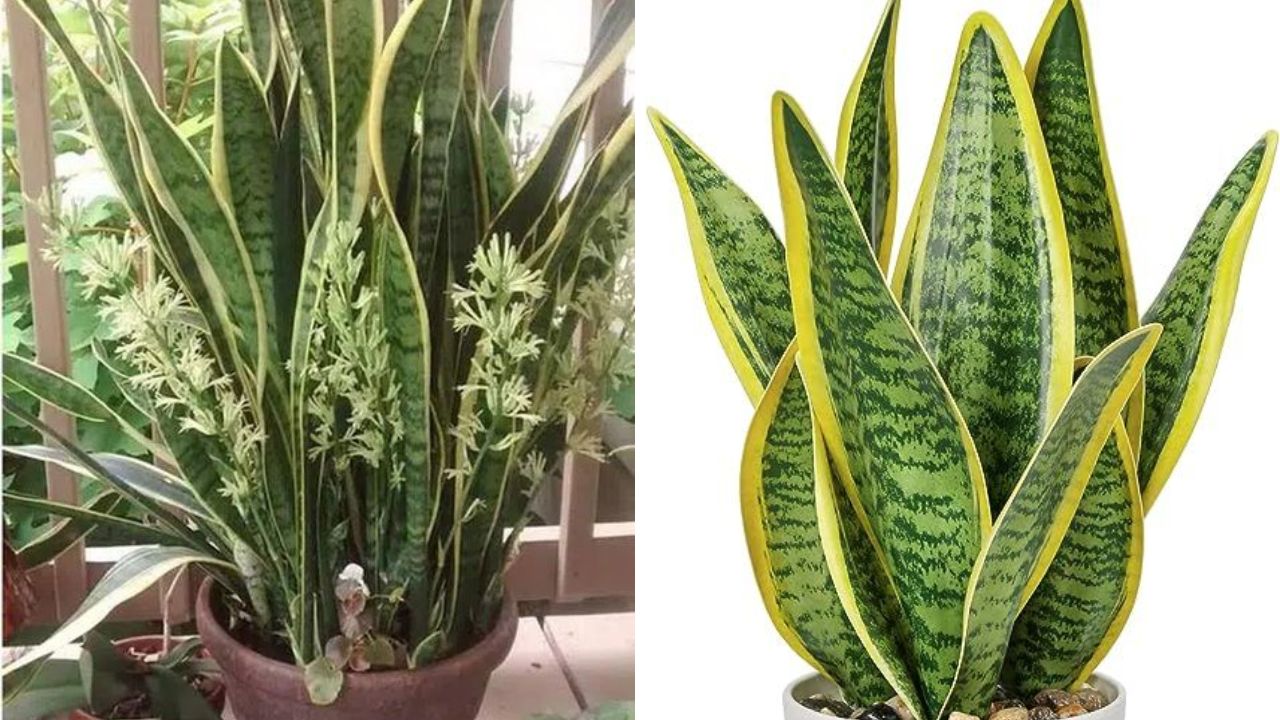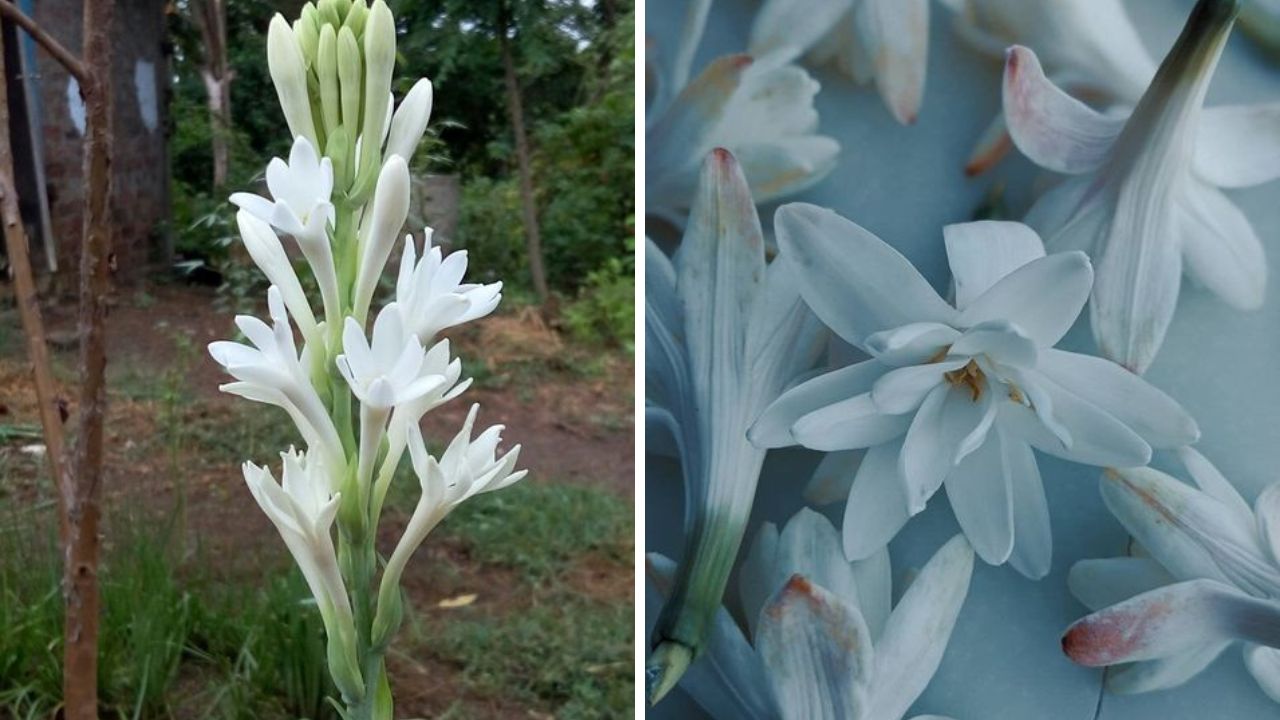Nothing beats the tuberose as far as aromatic blooms are concerned. Continue reading to learn everything you need to know from gardening expert Melissa Strauss to cultivate these fragrant beauties in your yard.
Its name may have appeared on the labels of the most well-liked skincare and fragrance products: With its waxy clusters of white blossoms that smell like sweet floral bliss, tuberose is a widely sought-after species of agave. Many people relate the scent to gardenia or jasmine, but it’s stronger and has more spicy undertones. Tuberose flowers are frequently used as the heart note in perfumes to give mixtures a bit of warmth.
In addition to being scented and remarkably hardy in zones 8 and above, this unusual plant is also exquisite. Take advantage of one of the world’s most deliciously fragrant flowers to make your yard smell like a perfumery. Let’s discover how to cultivate vibrant tuberose plants!
Table of Contents
ToggleWhat are Tuberoses?

Although tuberose appears innocent and pleasant, don’t let it deceive you. Few aromatic flowers have the same force as this one, which makes it one of the most often used florals in perfumery.
The smell of tuberose flowers has been used in thousands of fragrance compositions for about 400 years. The aroma is meant to evoke desire, magic, and seduction. The scent of tuberose is usually a heart note and has an animalistic, deep, and creamy quality. This charming blossom contains the smell that Marie Antoinette wore.
Apart from its usage in perfumes for cosmetic purposes, tuberose is also frequently used as a cut flower. One single flower stem has a vase life of at least two weeks and may fill an entire room with its aroma.
Tuberose is not a genuine rose, although having the same name. It is semi-succulent and related to the agave plant. These unusually aromatic garden plants require little maintenance. Their aroma is stronger than anyone’s. Not even the largest gardenia or jasmine comes close.
History Of Tuberoses
Growing tuberose for centuries, the Aztecs, Mayans, and other indigenous inhabitants of Central America did. It was referred to as omixochitl, or “bone flower,” in the language of the ancient Aztecs. Spanish explorers made the initial discovery of it in the 1600s. They brought this plant back with them and therefore introduced it to Europe first.
Carl Linnaeus named the plant Polianthus tuberosa in his 1753 description. It was later identified as Tuberosa amica by Freidrich Kaimir. The plant was not known by its current name, Agave amica, until 2017.
In the seventeenth century, tuberose gained immense popularity as a fragrance note. The popularity of cut flowers peaked during the Victorian era when they were utilized as funeral flowers. Even now, tuberose is still a highly sought-after aroma for bouquets, skincare products, and perfumes.
Characteristics Of Tuberose

It may surprise you to see a tuberose plant if you have never seen one before. It is a kind of semi-succulent agave, as mentioned. This deciduous perennial grows and blooms in the summer, but it is winter-dormant. The roots are tuberous bulbs that, in the correct circumstances, proliferate rapidly.
The plant is made up of a cluster of long, thin, pointed-end leaves that are bright green in color. Part of the way up the flower stalks are smaller, thinner leaves. A cluster of white, waxy, trumpet-shaped flowers sits atop tall, slender flower spikes.
Even if the flowers are lovely on their own, their outward look is not what makes them appealing. Instead, the main reason these flowers are grown is for their strong, aromatic scent.
Uses Of Tuberose

This plant serves a variety of functions, both functional and aesthetic. It’s not just used in perfumes for cosmetics; it also looks good as a decorative component in a landscape. In addition, it has a wide range of therapeutic uses.
It’s well known that tuberose oil is a fantastic skin-moisturizing ingredient. It also possesses anti-inflammatory qualities. This oil can be used in aromatherapy to help relax and ease tension.
Planting
Growing these plants from tubers—bulb-like root structures—is the most popular method. It is better to wait to put these outside until the last chance of frost has passed. Although they can withstand some cold, a late freeze will harm the sensitive, young foliage.
Grow tuberose plants in containers that you can bring inside for the winter in colder locations. Plant your bulbs in soil that drains well, two to four inches deep. Pick a location that gets lots of exposure to the sun. Six to eight inches should separate plants.
How to Grow Tuberoses
Growing tuberose plants is a simple and low-maintenance task. They are not invasive, although they do multiply swiftly. Because of their semi-succulent nature, you won’t need to water or give them much attention as long as you plant them in the proper location.
Light
For tuberose plants to blossom to their maximum capacity, they require an abundance of sunlight. Having said that, these plants don’t mind drying out nearly as much as other agave or succulent varieties. Plant your tuberose in a location that receives most of the day’s sunlight for a healthy plant.
Consider providing your plants with some midday shade if you live in a hotter region. A little shade in the afternoon will help them stay hydrated if they are exposed for six to eight hours in the morning. Retaining some moisture in the soil can also be aided by a mulch layer around the base of the plant.
Water
While some plants of the same kind are more drought-tolerant than others, these plants do not. Though it can withstand dry conditions, give your tuberose plant some periodic watering to encourage good blooms. Your flowers may fade rapidly if you let your plant roast in hot, dry soil.
During the growing season, if there is a drought, you will need to water your plant. Water this plant once a week with one to two inches. It is imperative that this plant not be overwatered. Fungal rot can damage the tuberous roots. Plants that are left in damp soil will eventually have their roots rot.
Soil
Tuberose plants require well-draining soil above anything else. If their tuberous roots are moist for an extended period of time, they will decay. For swampy soil, these are not the right plants. Their soil should be rich in organic materials since they require a lot of nutrients.
Sandy soil suits these plants well. However, in order to supply the nutrients this plant needs, it will need to be amended with some organic compost or manure. The best soil for this plant is loose, loamy soil with a somewhat acidic pH. A pH between 6.0 and 6.5 is ideal. Rather than erring on the side of being excessively alkaline, it is preferable to be too acidic.
Temperature and Humidity
The native climate of tuberose is hot and humid. It is not very tolerant of cold and does best in tropical areas. Your tubers should be able to withstand winter temperatures of 0° to 10°F (-18° to -12°C) if you mulch generously in the fall. This means that you can grow them in zone 7, but any lower temperature will cause your tubers to freeze to death.
Zone 8 plants are completely cold resistant, meaning they can withstand temperatures between 10° and 20°F (-12° to -7°C) without any problems. The blooms are not as heat tolerant as the leaves. Your flowers will wither and fade quickly in temperatures over 95°F (35°C). More water can be beneficial in extremely hot conditions.
Humidity ranging from average to high will be beneficial for your tuberose. Given their preference for hot, humid environments, these do not make very good houseplants. Although they are unlikely to bloom, they can thrive inside.
Fertilizing
This species feeds itself moderately to heavily. Fertilize it if you want the greatest possible appearance. Apply a granular fertilizer with a delayed release at the start of the growing season.
Give your plant more phosphorus-rich fertilizer when it is ready to flower. Starting with a 5-10-5 formula is a smart idea.
Fertilize your tuberose every four to six weeks during the growing season. When it comes time to plant, you can also incorporate some well-rotted manure or compost into your soil. This will decompose gradually, giving your plant low-quality nutrients for a long time.
Maintenance
Throughout the growing season, maintenance pruning is a continuous operation. Please feel free to remove any leaves that appear to be turning brown or yellowing. Apply the same procedure to any leaves harmed by illness or vermin infestation.
If you want lots of blossoms, it’s necessary to deadhead your tuberose. The plant will provide more blossoms the more you trim off of it. Remove them, whether you cut them for a bouquet or let them wither on the plant. You’ll be happy that you did!
When it comes to fall pruning, you should put off pruning until the first frost kills the foliage. Wait till it becomes chilly if you live in a warm climate without frost. After that, trim the foliage until it is only six inches tall. Applying a thick layer of mulch is important in areas that frequently encounter freezing temperatures.
Propagation
The way roots grow in tuberose plants makes them easy to multiply. The bulbs are easily divided by simply digging them up, just like most other tuberous plants. Every three to four years, separate your bulbs to prevent cross-pollinating and to encourage better flowering. Even if you have no intention of procreating, you should still do this.
To gently remove your tubers from the ground and loosen the soil, use a garden fork. Sort the bulbs into different sizes, then plant the larger ones again. Share these wonderful plants with other garden enthusiasts.
Also Read: Top 10 Best Yarrow Varieties For Your Garden





